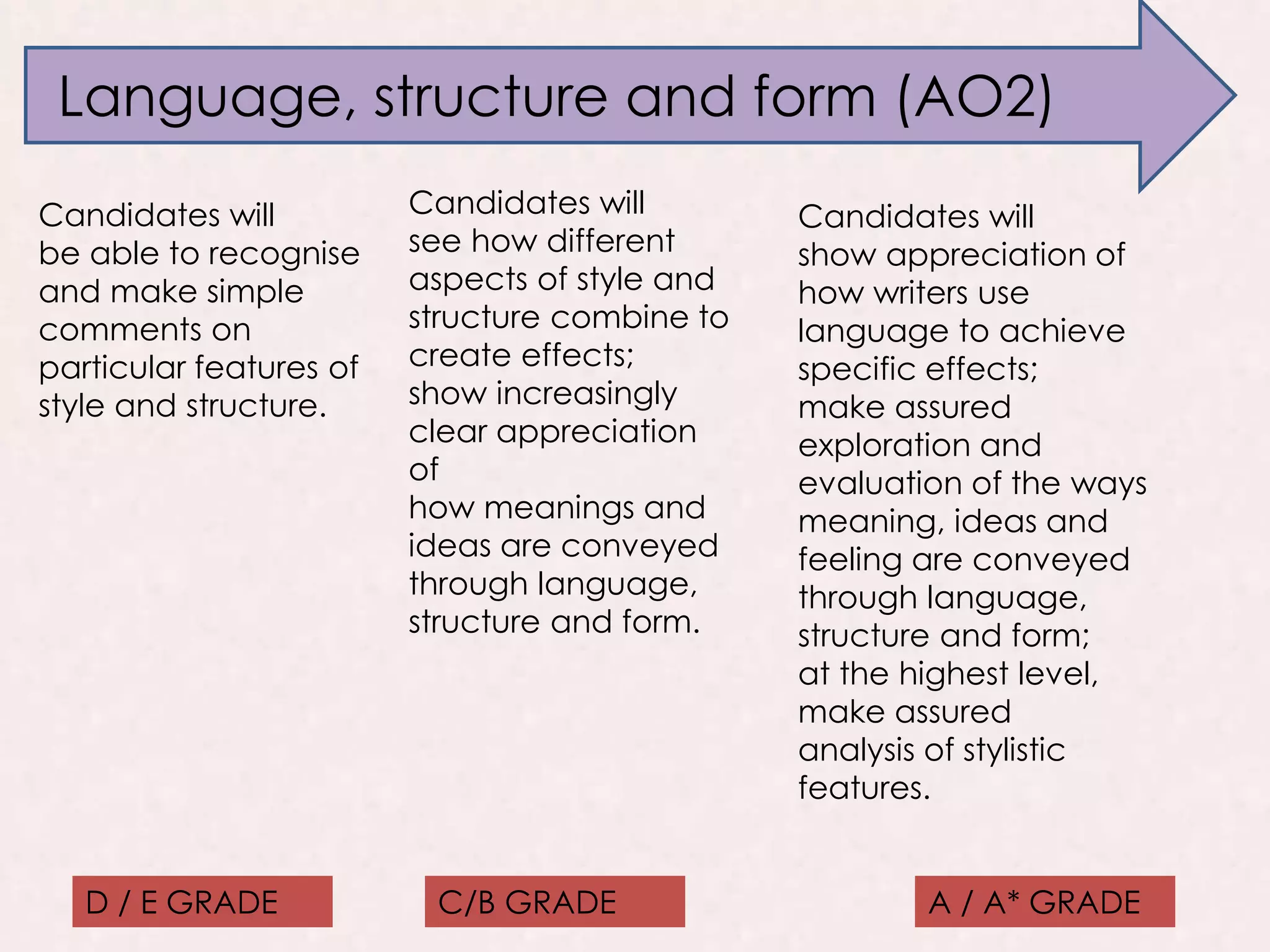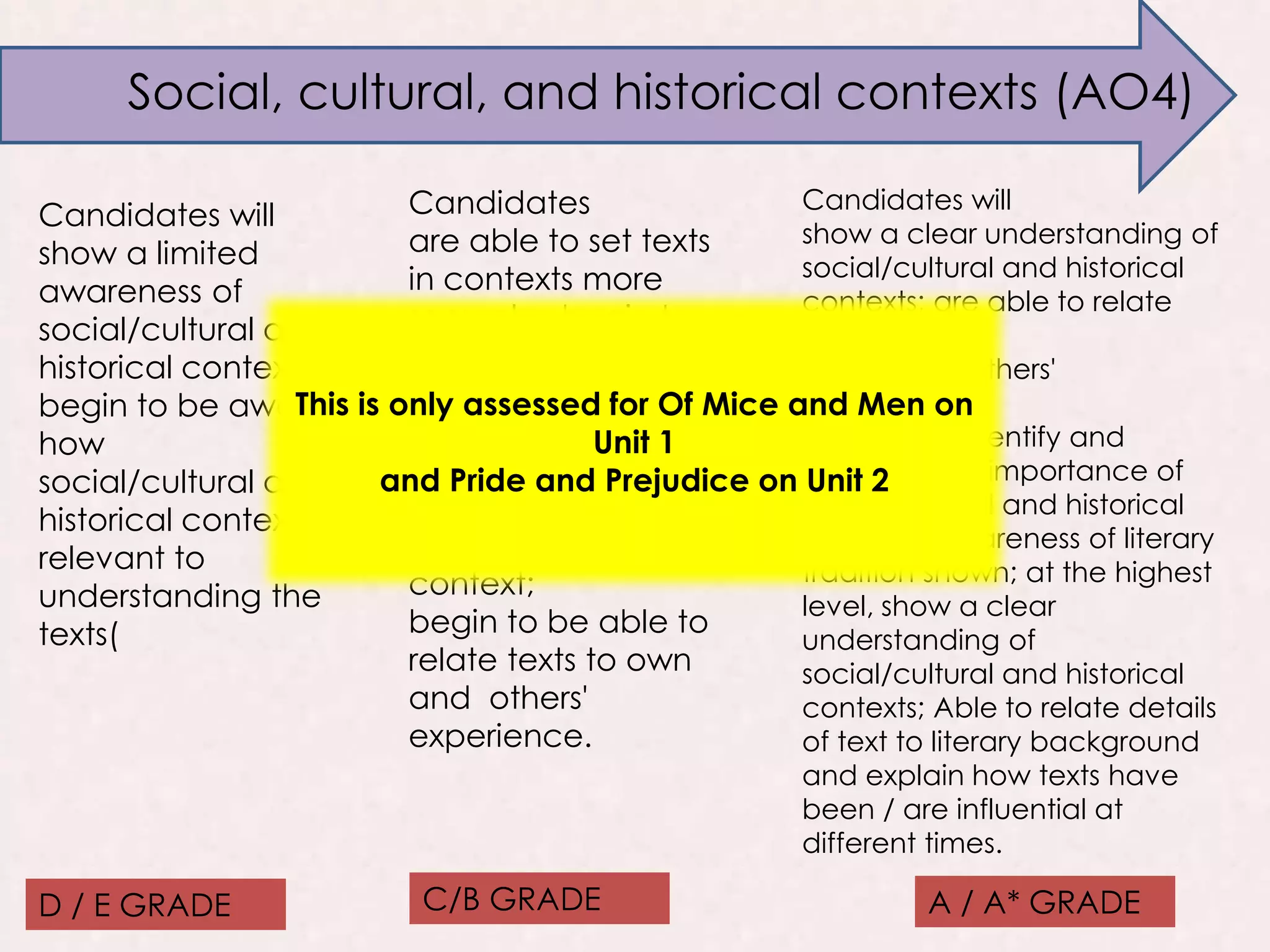This document provides guidance for students taking an English language exam that consists of reading and writing sections. It outlines the timing and structure for answering questions, with 5 minutes allotted to read questions and passages, and around 10 minutes for each question. It describes different types of questions, such as "what" questions requiring evidence from the text and "how" questions involving language analysis. Trickier questions involving inference, comparison, or multiple focuses are also discussed. Strategies are presented for achieving high marks on whole text literature questions by linking responses to historical context. Requirements for different grade levels are defined in terms of textual understanding, language analysis, and contextual awareness.
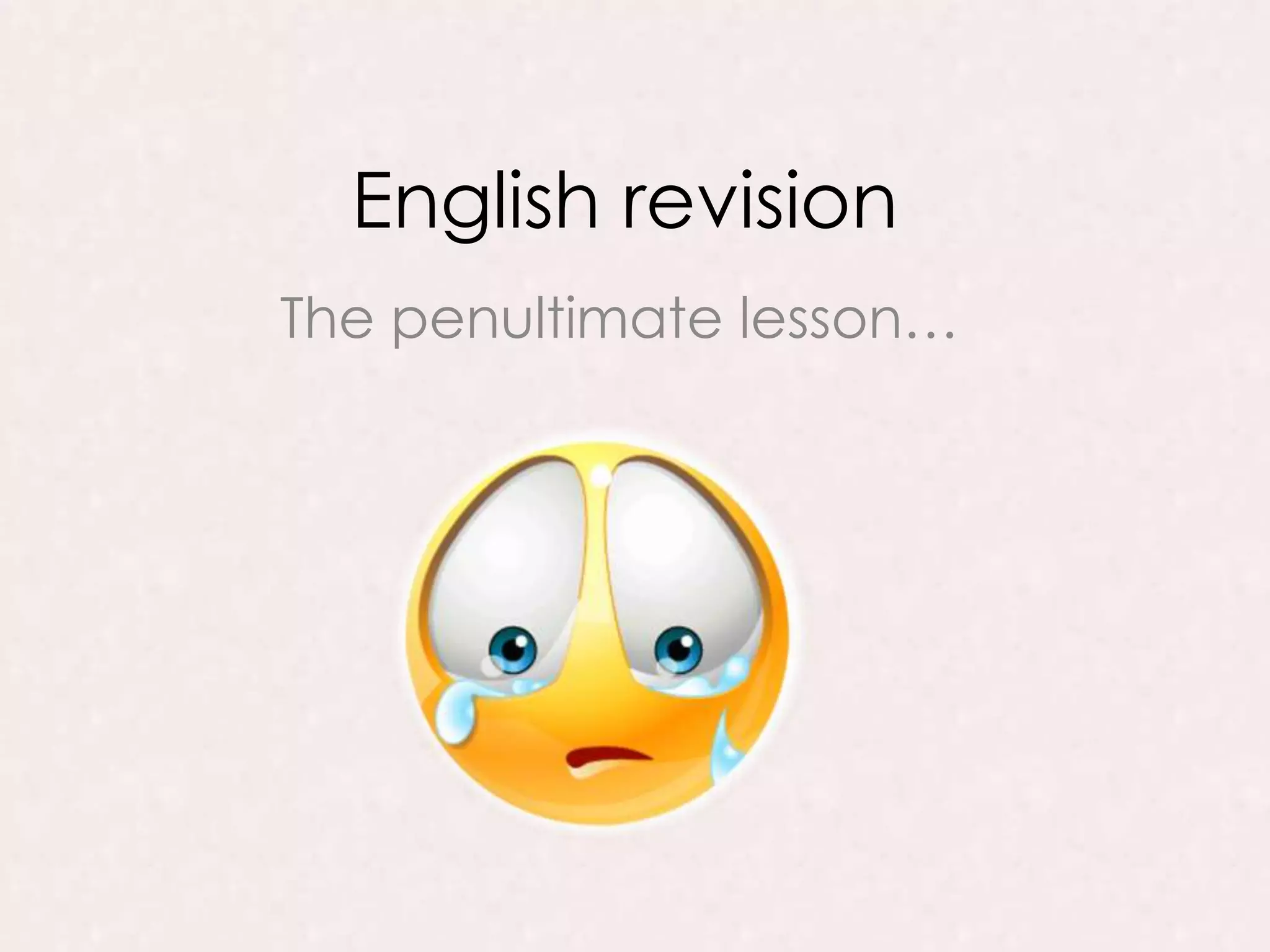

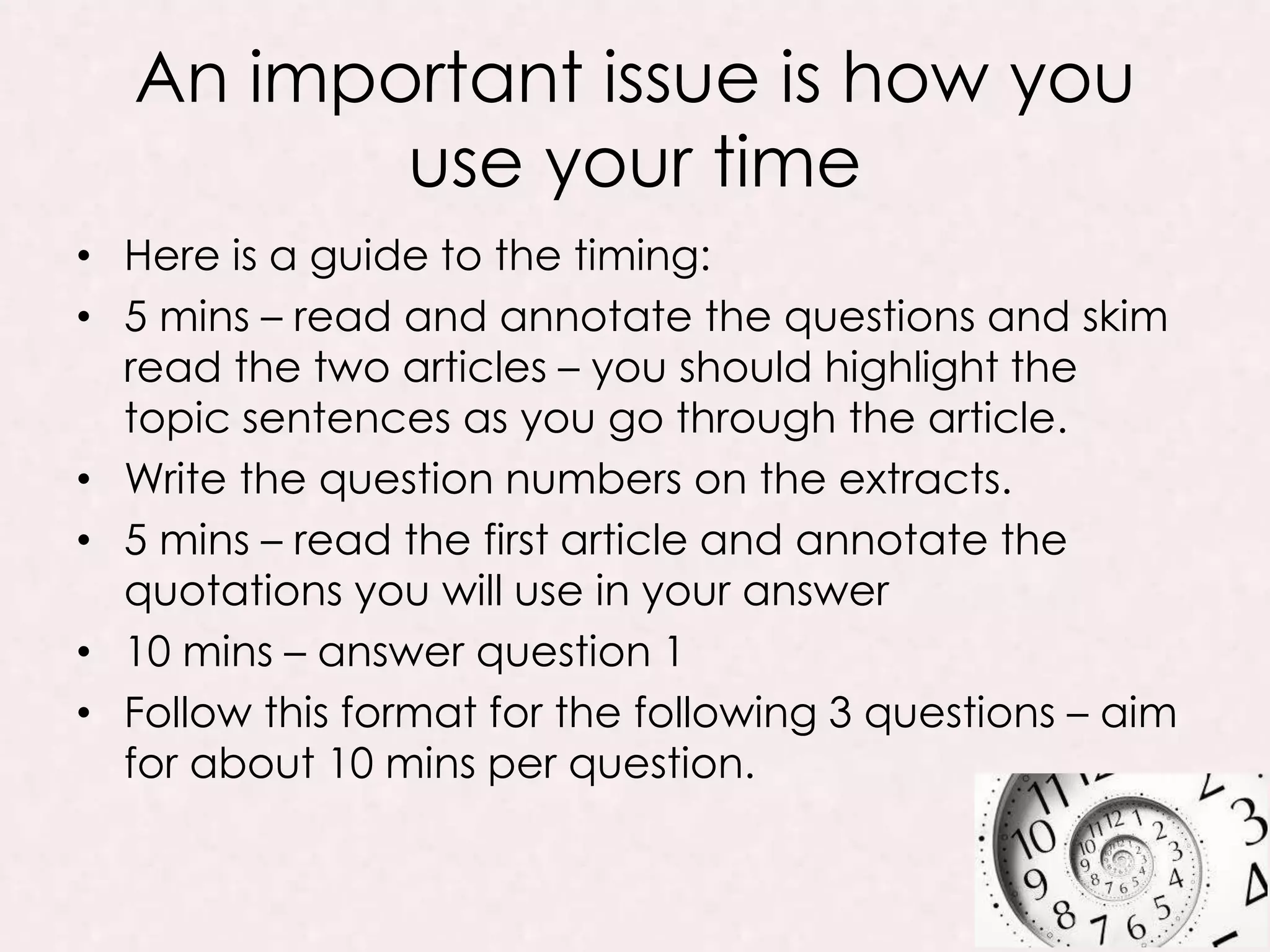

![Tricky questions
• “Why” questions can be search and find
• – e.g – Explain why Charles Starmer-Smith thinks cycling is a popular
and enjoyable activity. [10]
• This question tests the ability to read with insight and engagement, to
make appropriate references to texts and to sustain an
interpretation.
• Or inference questions
• e.g-According to the magazine article, why do people watch reality
TV programmes? [10]
• This question tests knowledge and understanding of text and use of
inference. It also tests appreciation of language.
• Give 8-10 marks, according to quality, to those who select
appropriate material from the text to reach a well-considered and
detailed response. The best answers should be thorough as well as
perceptive, covering a range of points with insight and accuracy.
These answers should be cohesive and coherent, making clear
inferences.](https://image.slidesharecdn.com/englishrevision2015-150516203611-lva1-app6891/75/English-revision-2015-5-2048.jpg)
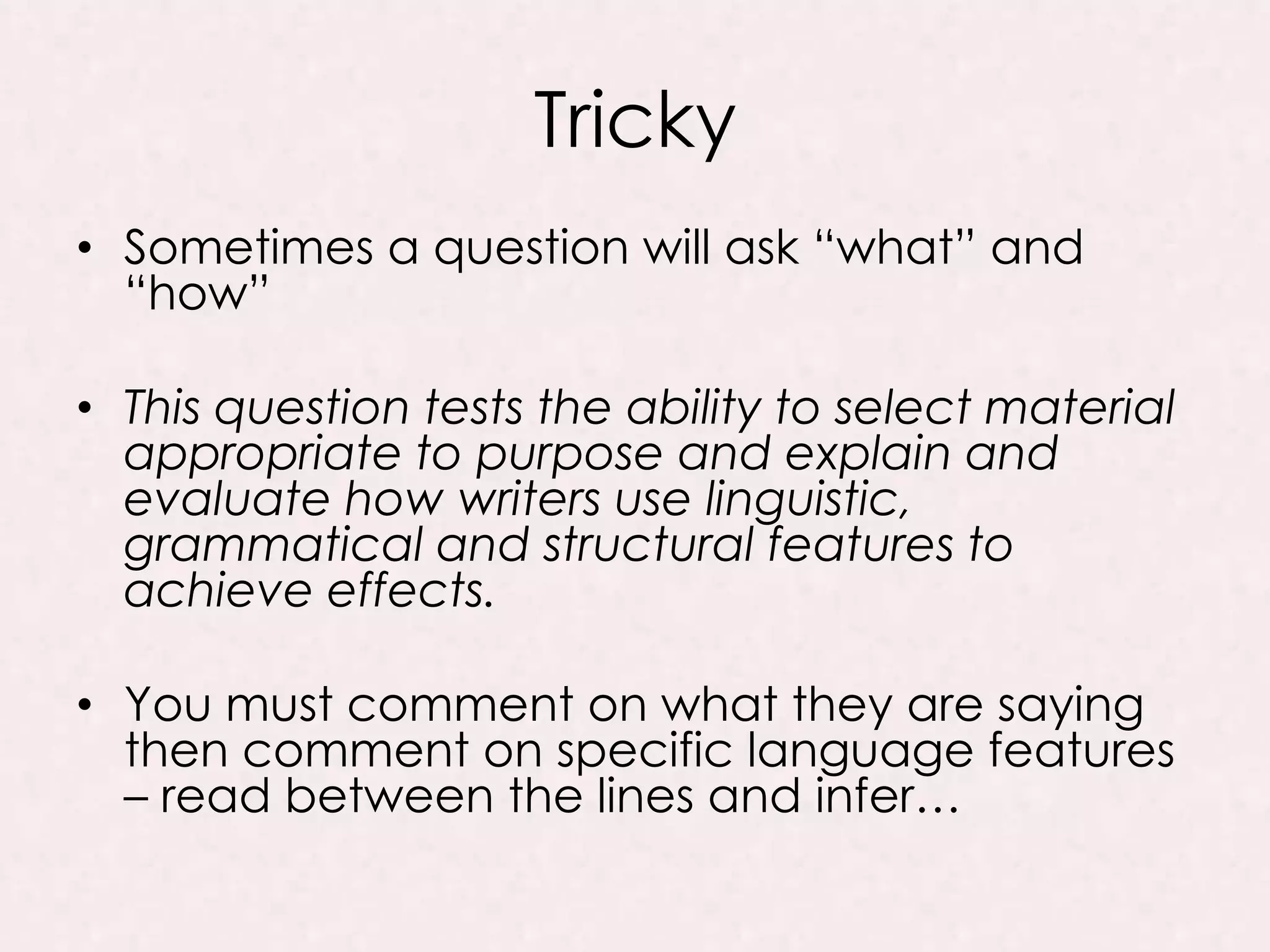

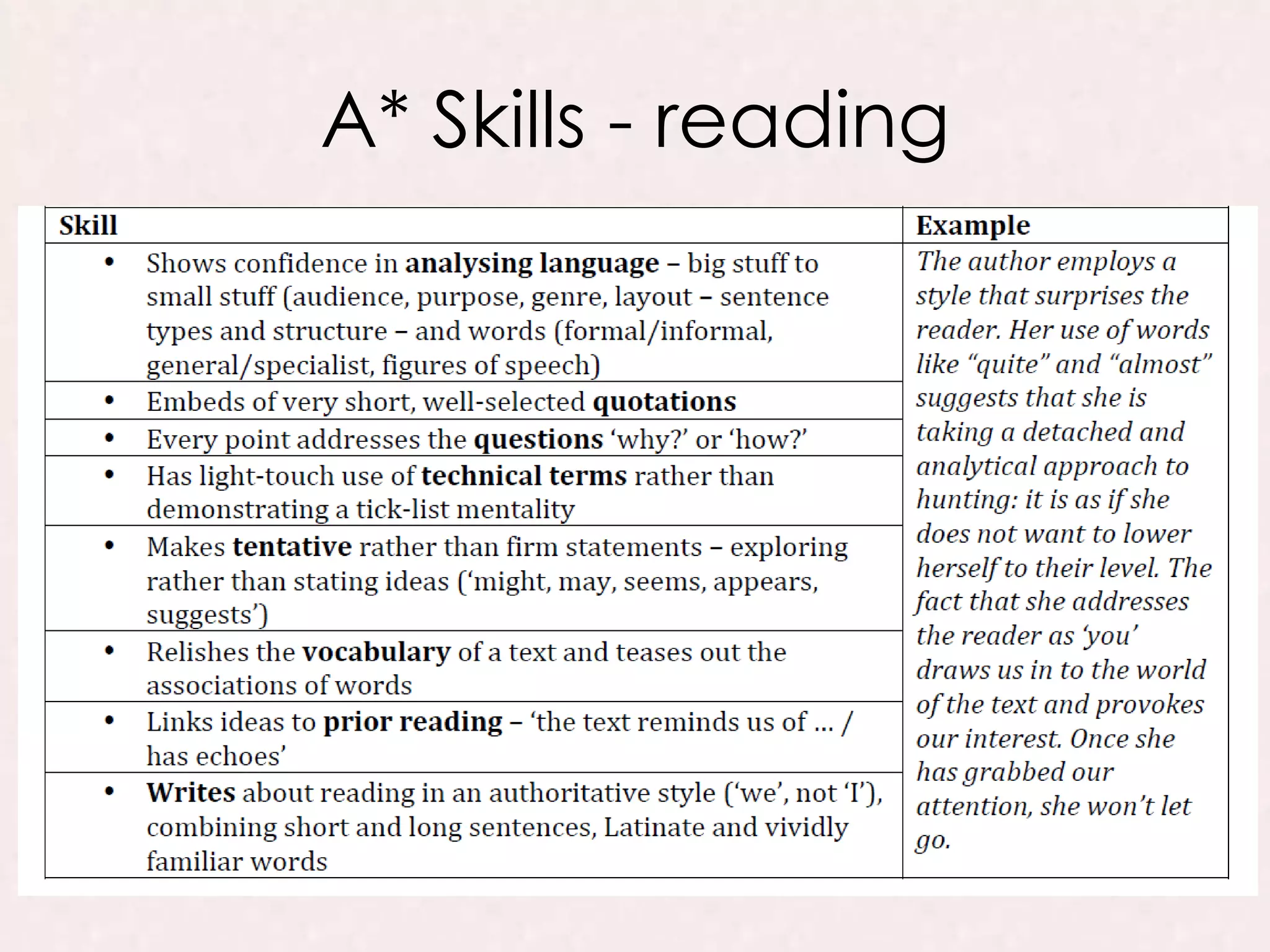
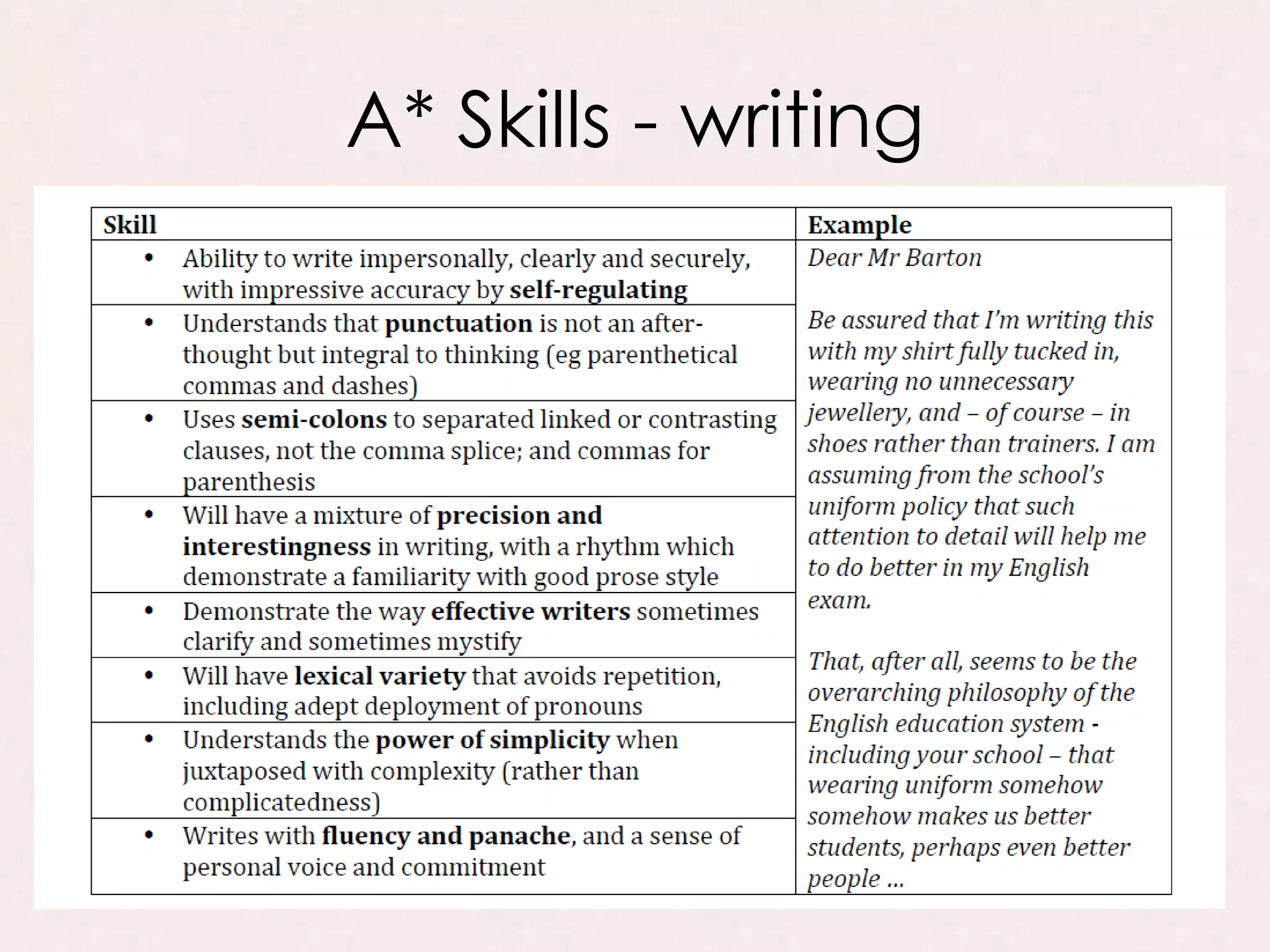
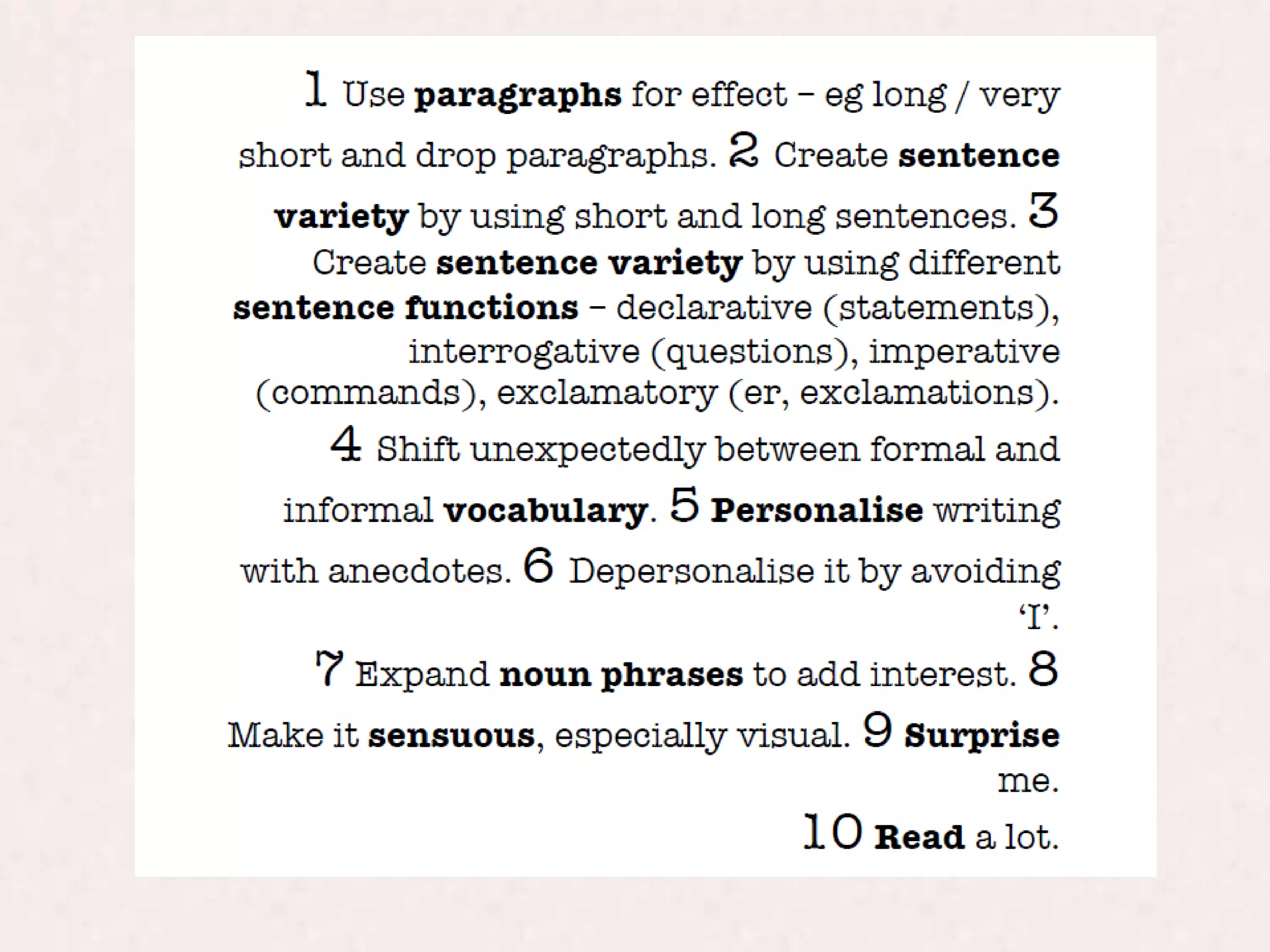

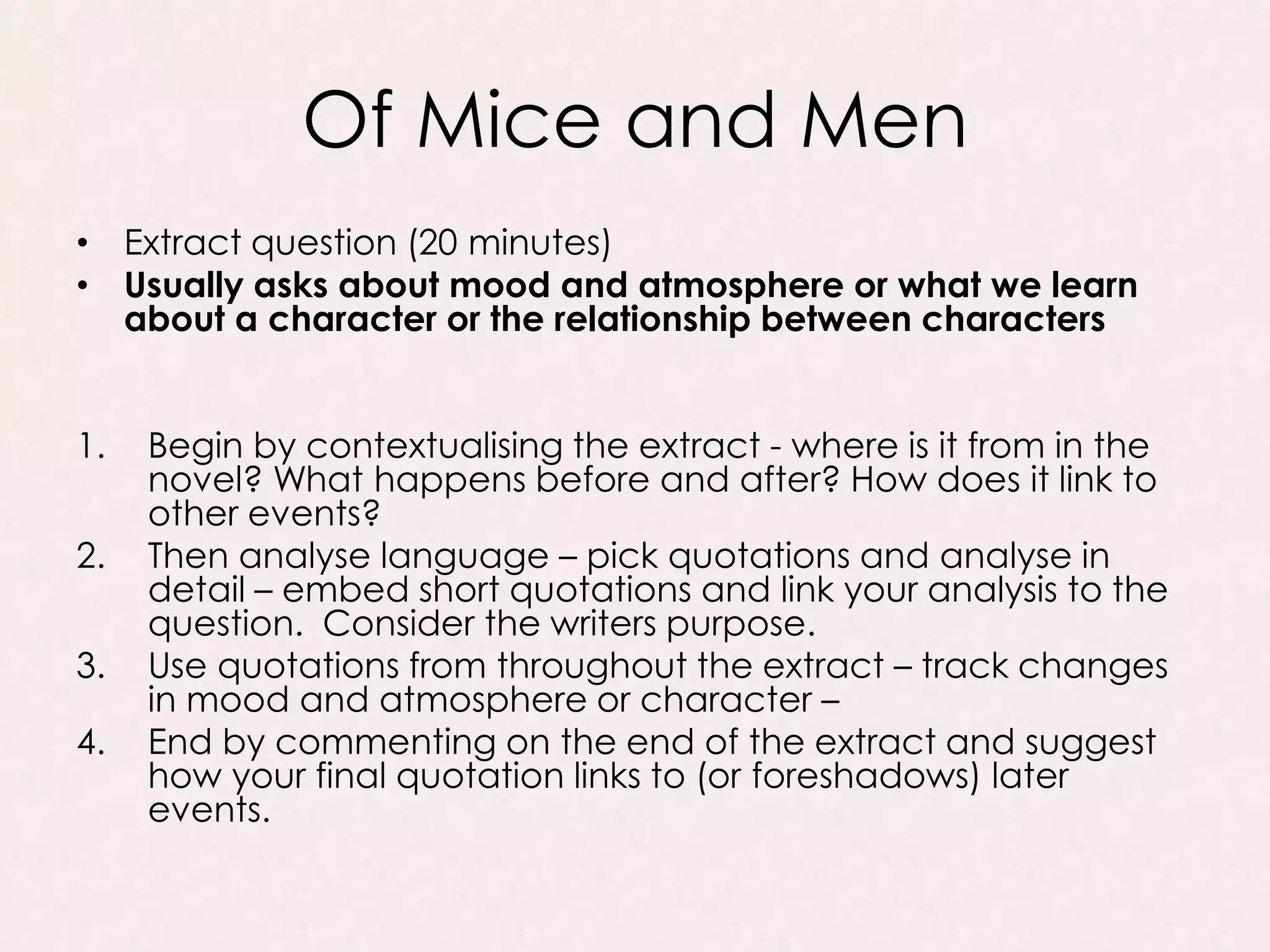
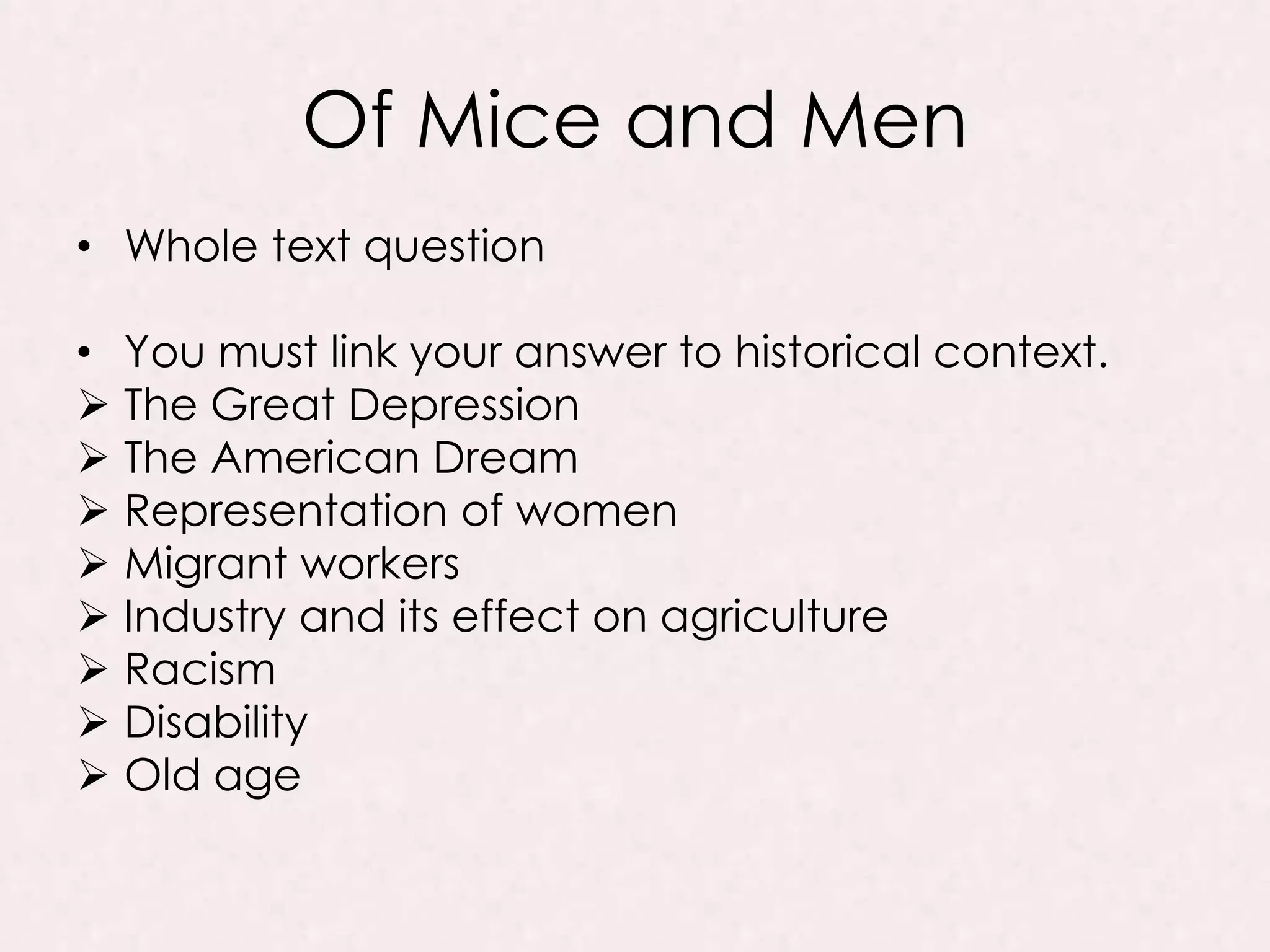
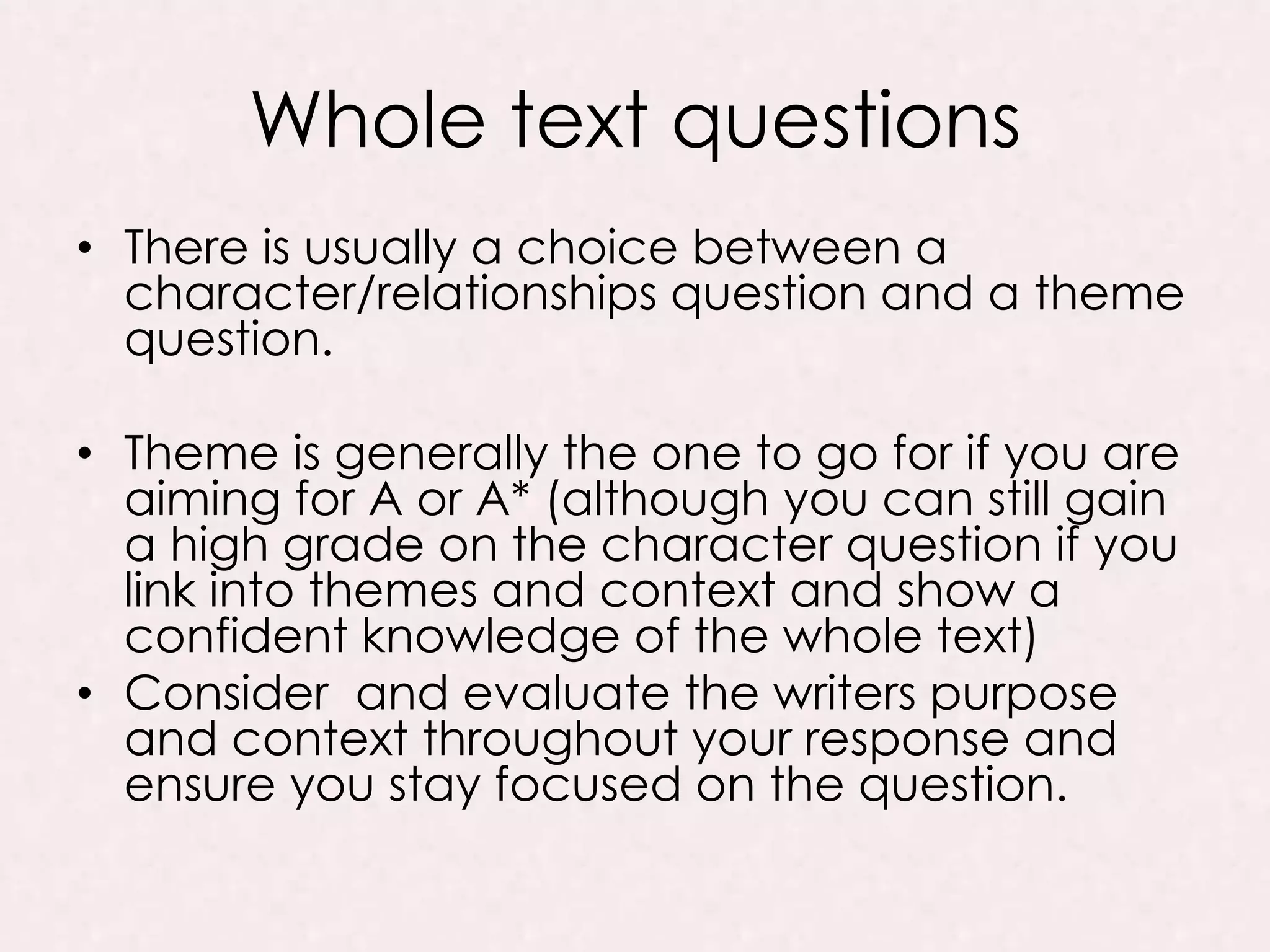

![Unseen poetry
• The question is always the same.
Write about the poem and its effect on you.
• You may wish to include some or all of these
points:
• the poem’s content – what it is about;
• the ideas the poet may have wanted us to
think about;
• the mood or atmosphere of the poem;
• how they are written – words or phrases you
find interesting, the way the poem is structured
or organised, and so on;
• your response to the poem. [20]
Use the bullet points to help you plan and structure your response](https://image.slidesharecdn.com/englishrevision2015-150516203611-lva1-app6891/75/English-revision-2015-16-2048.jpg)



